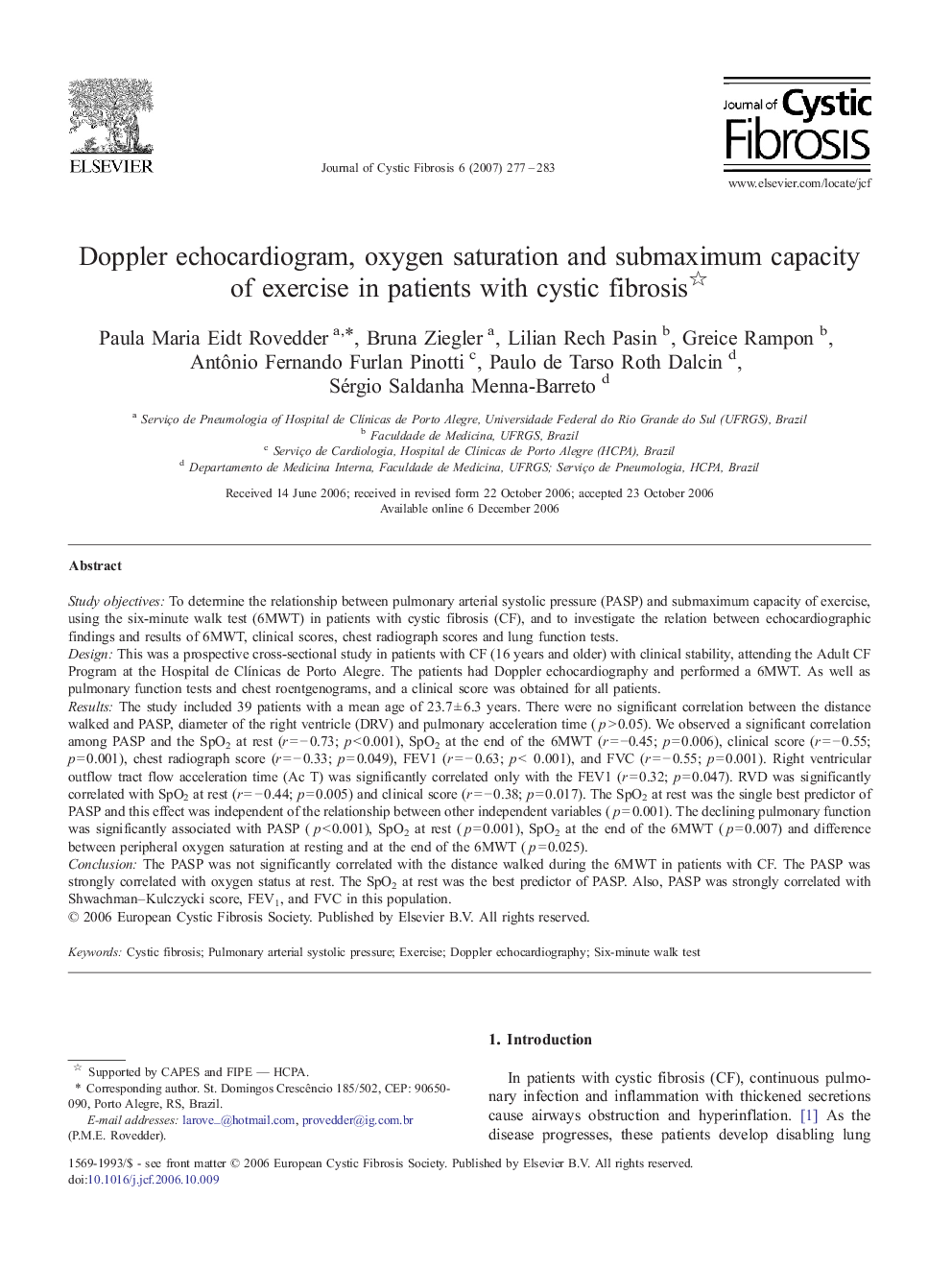| Article ID | Journal | Published Year | Pages | File Type |
|---|---|---|---|---|
| 4209511 | Journal of Cystic Fibrosis | 2007 | 7 Pages |
Study objectivesTo determine the relationship between pulmonary arterial systolic pressure (PASP) and submaximum capacity of exercise, using the six-minute walk test (6MWT) in patients with cystic fibrosis (CF), and to investigate the relation between echocardiographic findings and results of 6MWT, clinical scores, chest radiograph scores and lung function tests.DesignThis was a prospective cross-sectional study in patients with CF (16 years and older) with clinical stability, attending the Adult CF Program at the Hospital de Clínicas de Porto Alegre. The patients had Doppler echocardiography and performed a 6MWT. As well as pulmonary function tests and chest roentgenograms, and a clinical score was obtained for all patients.ResultsThe study included 39 patients with a mean age of 23.7 ± 6.3 years. There were no significant correlation between the distance walked and PASP, diameter of the right ventricle (DRV) and pulmonary acceleration time (p > 0.05). We observed a significant correlation among PASP and the SpO2 at rest (r = − 0.73; p < 0.001), SpO2 at the end of the 6MWT (r = −0.45; p = 0.006), clinical score (r = − 0.55; p = 0.001), chest radiograph score (r = − 0.33; p = 0.049), FEV1 (r = − 0.63; p < 0.001), and FVC (r = − 0.55; p = 0.001). Right ventricular outflow tract flow acceleration time (Ac T) was significantly correlated only with the FEV1 (r = 0.32; p = 0.047). RVD was significantly correlated with SpO2 at rest (r = − 0.44; p = 0.005) and clinical score (r = − 0.38; p = 0.017). The SpO2 at rest was the single best predictor of PASP and this effect was independent of the relationship between other independent variables (p = 0.001). The declining pulmonary function was significantly associated with PASP (p < 0.001), SpO2 at rest (p = 0.001), SpO2 at the end of the 6MWT (p = 0.007) and difference between peripheral oxygen saturation at resting and at the end of the 6MWT (p = 0.025).ConclusionThe PASP was not significantly correlated with the distance walked during the 6MWT in patients with CF. The PASP was strongly correlated with oxygen status at rest. The SpO2 at rest was the best predictor of PASP. Also, PASP was strongly correlated with Shwachman–Kulczycki score, FEV1, and FVC in this population.
